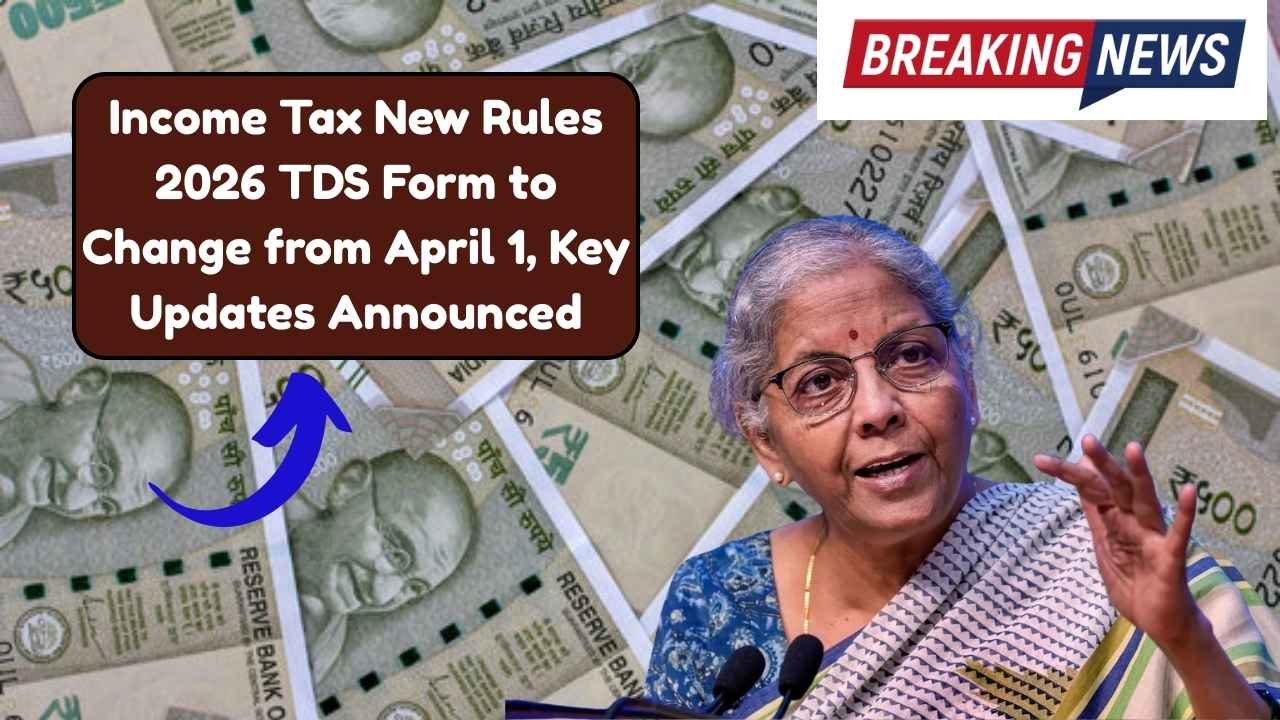The Indian income tax system is set to undergo important changes from April 1, 2026. One of the most notable updates is the revision of the TDS form, a move that will affect both taxpayers and employers. With the government continuously striving to make tax compliance more transparent and efficient, these new rules aim to simplify processes, increase accountability, and plug revenue leakages. For individuals and businesses, understanding the upcoming changes is crucial to avoid penalties and to remain compliant with the law.
Why the TDS Form is Changing
Tax Deducted at Source, commonly known as TDS, is one of the cornerstones of India’s tax collection mechanism. It ensures that taxes are collected at the point of income itself, thereby minimizing chances of evasion. Over the years, multiple amendments have been made to streamline TDS provisions, but challenges in reporting and mismatches in compliance have often troubled both taxpayers and employers.
The government has identified that existing forms do not fully capture necessary details and, at times, lead to confusion during filing and reconciliation. By introducing a revised TDS form from April 2026, the aim is to create a uniform system that is easier to understand, technologically compatible, and more efficient for record-keeping.
Key Highlights of the New TDS Form
According to the latest updates, the revised TDS form will bring several structural and procedural modifications. Some of the expected highlights include:
- Additional disclosure requirements to improve transparency in reporting income and deductions.
- Integration with the Annual Information Statement and Form 26AS for better matching of income.
- Simplified sections to reduce errors during filing.
- Enhanced digital compatibility, making it easier to file returns through online platforms.
- Clearer instructions for both deductors and deductees.
These measures are intended to reduce the compliance burden on genuine taxpayers while ensuring stricter checks on tax evasion.
Impact on Salaried Individuals
For salaried individuals, TDS plays a direct role since employers deduct a portion of salary every month based on estimated tax liability. With the new form, employees may notice greater clarity in how their income and deductions are reported. This will also help in avoiding common mismatches that often occur during return filing, especially in cases where individuals have multiple sources of income.
Additionally, the integration with AIS and 26AS will give taxpayers a consolidated view of their financial information, reducing the chances of missing income declarations. This is expected to simplify the filing process and minimize notices from the income tax department.
Changes for Businesses and Employers
Employers and businesses that act as deductors will need to adapt quickly to the new system. They will be required to update their accounting and payroll software to align with the revised TDS reporting format. Proper training of staff handling compliance will also be necessary to avoid errors.
Small and medium-sized enterprises may initially face challenges in adapting to the new format, but in the long run, it is expected to save time by reducing discrepancies during assessments. Companies will also benefit from a more structured reporting mechanism, which will make audits and reconciliations smoother.
Government’s Objective Behind the Rule Change
The government’s decision to implement a new TDS form aligns with its broader digital transformation agenda. In recent years, significant steps such as faceless assessments, e-verification of returns, and online grievance redressal mechanisms have been introduced. The new TDS rules are another step in the same direction.
By making tax compliance more transparent, the government hopes to increase voluntary compliance among taxpayers while also improving the efficiency of its revenue collection. Such reforms are crucial to widening the tax base and ensuring that the growing economy has sufficient funds for infrastructure and development projects.
How Taxpayers Should Prepare
Since the rules come into effect from April 1, 2026, taxpayers have sufficient time to prepare themselves. Individuals should begin by keeping better records of their income sources, investments, and deductions. This will ensure that when the new form is introduced, there are no difficulties in providing the required details.
Businesses should consult their chartered accountants or tax consultants well in advance to understand the structural changes. They should also review their payroll and accounting systems to ensure compatibility with the new format. Preparing early will prevent last-minute compliance issues.
Other Income Tax Changes Effective from April 2026
Apart from the revised TDS form, the government is also expected to roll out additional changes in the income tax system from April 2026. These include updated provisions for certain exemptions, clarity on tax treatment of digital assets, and modifications in advance tax rules. Each of these measures is designed to bring the tax system in line with modern financial practices and to plug loopholes that have emerged over time.
Taxpayers should regularly check official updates from the Income Tax Department to stay informed about these new provisions. Ignoring small changes can lead to larger complications during assessment.
Conclusion
The upcoming changes in the TDS form from April 1, 2026, mark an important step in India’s tax reforms. By making reporting more transparent and aligned with digital systems, the government aims to reduce confusion, improve compliance, and ensure smoother tax administration. Both individuals and businesses should prepare themselves early to adapt to these changes without disruptions.
With proper awareness and timely preparation, the transition to the new rules can be smooth and beneficial for all stakeholders involved.
Disclaimer
The information provided in this article is based on the latest updates available regarding income tax rules and the proposed changes effective from April 1, 2026. Tax laws are subject to amendments by the Government of India, and details may vary with official notifications. Readers are advised to verify information from the Income Tax Department’s official website or consult a qualified tax advisor before making financial or compliance-related decisions.



